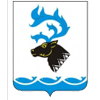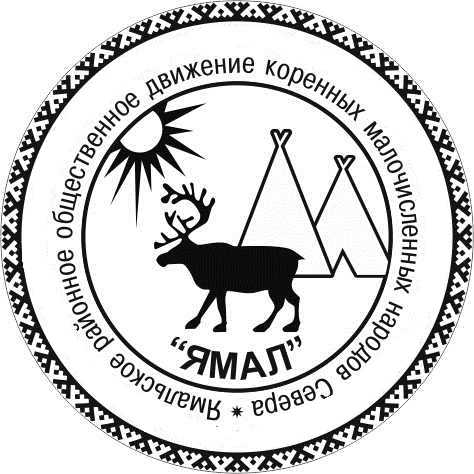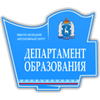We continue to publish our diary notes.
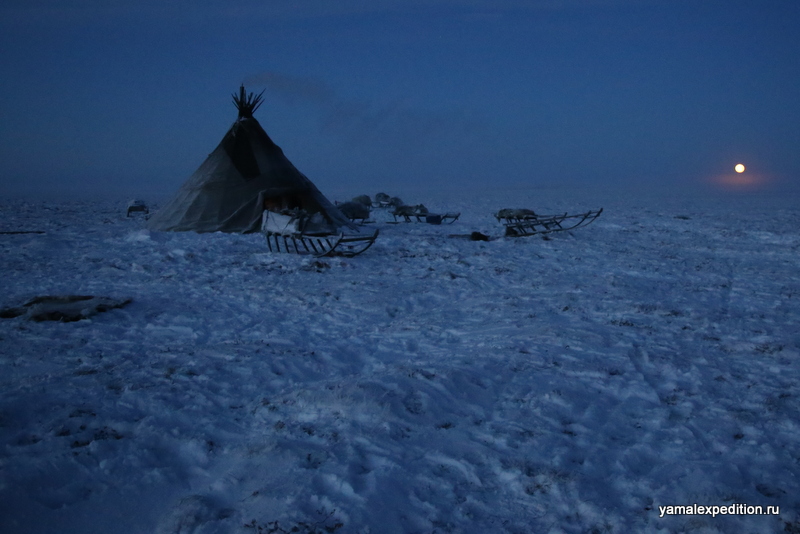
After arriving to our new camp place on October 27th, we stayed there for more than a week. Not far from us there are other private reindeer herders, and we are in a way squeezed in a narrow movement passage. This time of the year herders are collecting their reindeers which were mixed earlier with the reindeer of other herds of private or brigade herders. In autumn the separation of herds is done in a special "collection coral". In this coral one also separates animals for further slaughtering, then moves to slaughtering points (for example one near Yuribey).
On October 29th we chose reindeers for meat and for nartas. Kostya went for longer trip and looked for his reindeers. Once he came back together with Kostya Hudi (our summer neighbor), and after short stay they were gone together to the big coral.
These days Albina looked after the herd. Usually it is a typical men's work, but in private herders' families women aften have to fulfill men tasks. Every day we woke up about 6 am, and after a morning tea Albina left to look after the herd. She was worried that the herd could mix with other herders' reindeers. So she went to look after the herd several times a day, especially in the evening when animals can move far away from the chum. One has to wait until reindeers stop to dig for reindeer lichen and rest.
We could not do yerkolava without Kostya and choose bulls for Albina's narta, so she put in "domesticated" avka reindeers giving them bread as reward. Several times she caught bulls (not domesticated) with a lasso, but not in the way men do it, but by putting the lasso bend on the ground. For example near the urine spot (some reindeer like to lick urine because of salt containing in it - they are in special need for sold being on their "reindeer lichen diet"). Albina did her task very well - during Kosty's absence everything was OK with the herd.
This time our camp was placed near the spot we left nartas with winter stuff in summer. Albina brought these nartas back, and we spent some time sorting and replacing things.
The biggest advantage of this place is that firewood is close to chum and quite abundant. it allowed us to burn the stove and warm our "summer chum" (with summertime cover). Also we tried to collect firewood for the future encampment places where wood is not so easy available. So we collected osier bed, cut it, loaded it to nartas and brought to our chum. This way we collected three full nartas of firewood, and it would be more if snowstorm wouldn't come.
(please press "Читать полностью")
Albina's narta with firewood and Pedava:
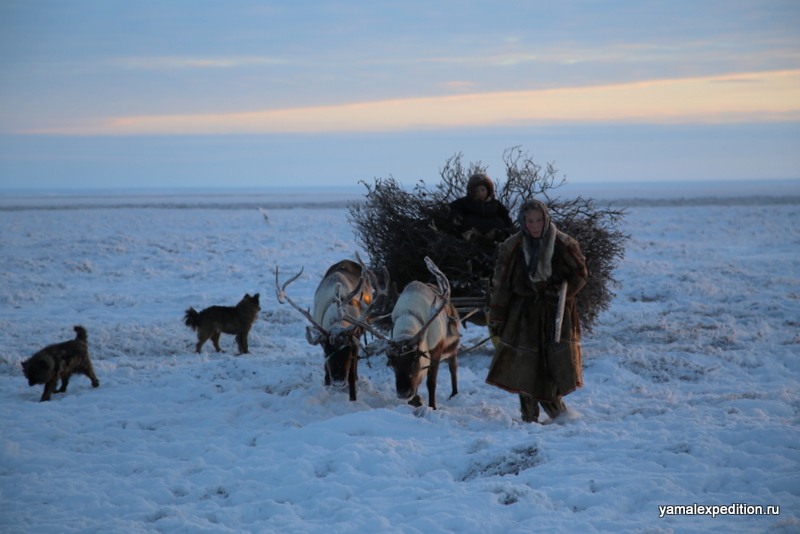
Collecting firewood:
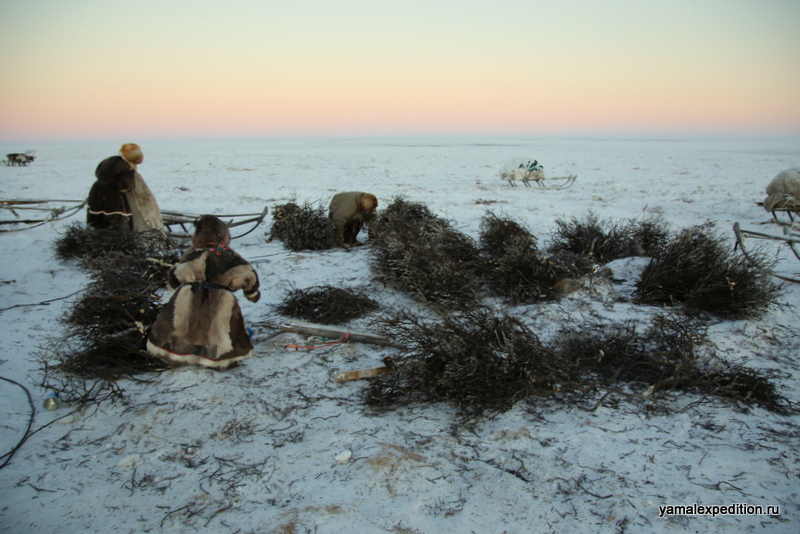
Moon landscape:
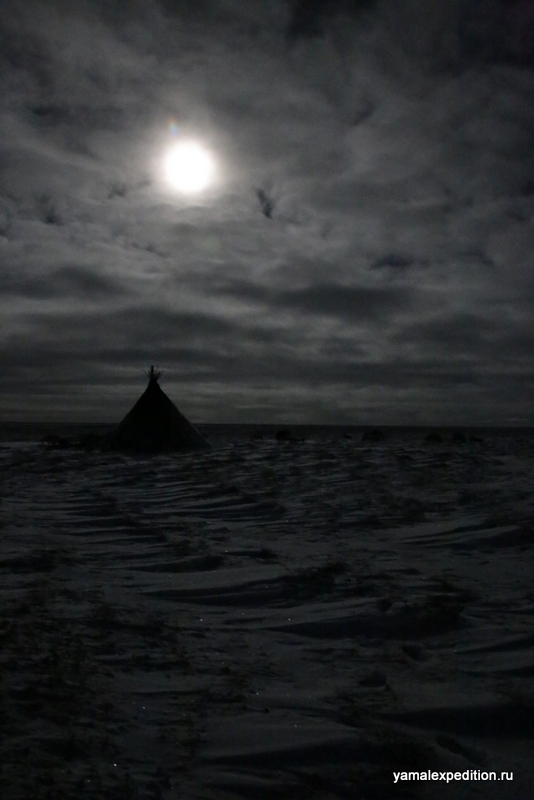
On November 6th a baby boy was born in the family of our support team - Maria and Victor Shiryaev. They do administration of our website and social networks, keep communication between tundra and the outside world. We and our Nenets family congratulate young parents!
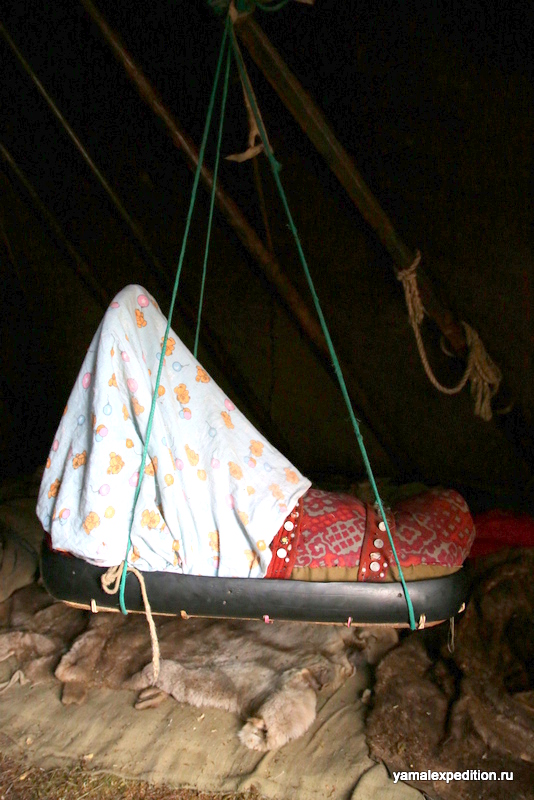
Nowadays in most cases a mother-to-be goes to have her labor to a nearby town with a helicopter. But still many kids are born in chums. There are six children in our Nenets family, and three of them were born in tundra. After having birth women quite soon come back to her normal life and tasks. After birth in chum mother and child have to go through "purification ceremony", when one cut the baby's umbilical cord. A piece of fur and reindeer's bowels are places on a piece of coal, they make infusion of shelf fungus and purify with it the chum, its inhabitants, nartas and reindeers.
If contractions begin during nomadic movement, argishes stop immediately and a chum is bult. A baby born in these circumstances would be named Мюсеня - (Nenets "myusec" - to move) or Ӈэсунда (Nenets "ӈысы" – encampment place). Often baby is named a name with a special meaning: Hadko - a boy born during snowstorm, Natena - a long-awaited, Edeyko - a new one, Hasavako - little man, Pedava - brave one, Puyne - the last one (girl's name), Savane - good woman and so on. Grandparents often choose a name for the newborn after an ancestor with a very good fate.
In central Russia's tradition parents explain to kids that they were found at the cabbage field or were brought by a stork. As for Nenets, depending from the camp place they say that a baby was found in the osier bed bushes, in a sand pile or near the river bank.
For those who like superstitious beliefs: Nenets believe that when one hiccups, it refers to the events of the day he (or she) was born. For example when Semyon is hiccuping, Albina says for fun that now would be argument - it's because at the day he was born two women for neighbour chums had severe argument.
Semyon and Pedava watch animation film:
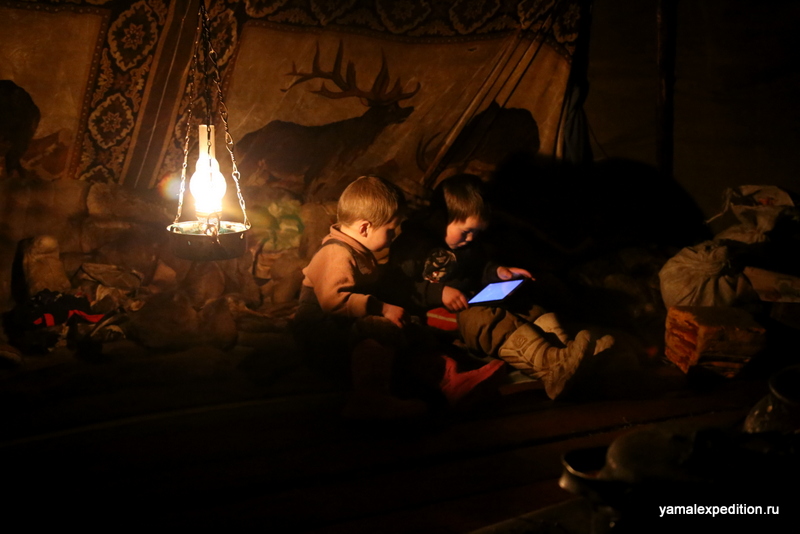
Pedavako:
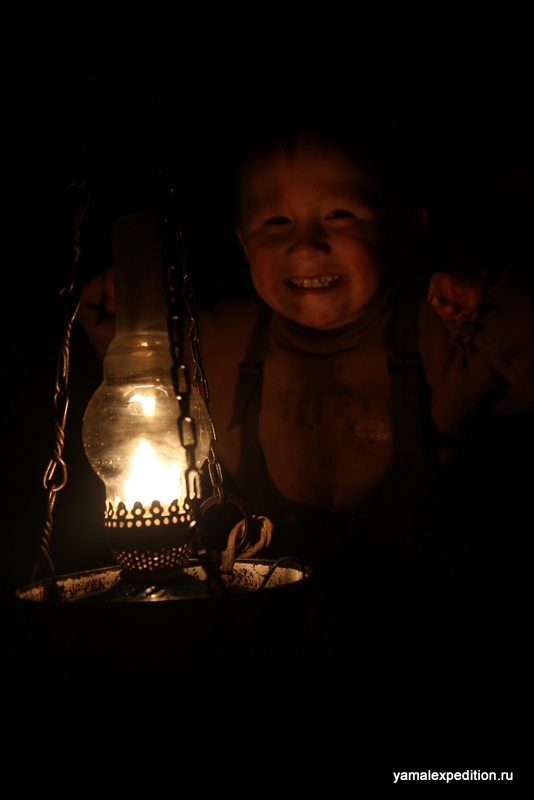
В этот же день вернулся Костя, объявив, что завтра каслаем.

